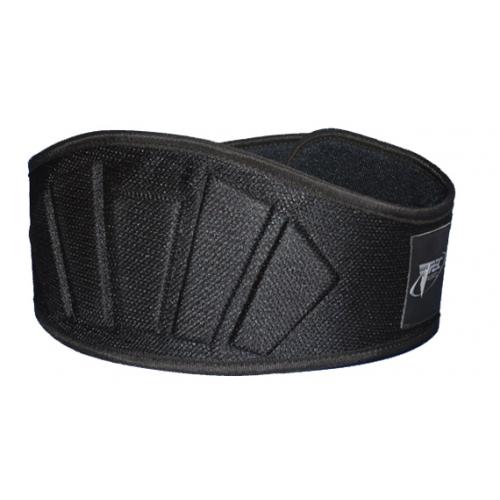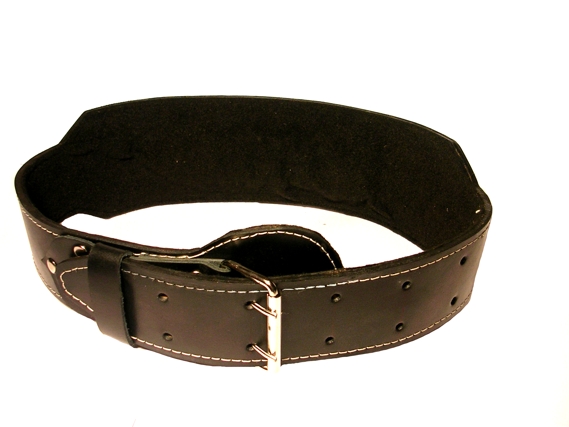Weight Lifting Belt
Weight training is a common form of exercises that are performed by enthusiasts who want to build their body. It can be done by anyone; however it needs proper guidance by a trainer. This strength training develops the power and size of your muscles with the help of weight training equipment as well as the force of gravity. The weight training equipment which is used during these workout sessions vary and will include barbells, dumbbells, pull up bars, belts, straps, gloves, etc.
Weight lifting is also a popular sport that is practiced in various national and international events. At such events, athletes wear weight lifting belts to give support to their back. However, in the recent times most of the athletes started wearing these belts to reduce strain on the lower back. This is because, when a person is standing upright and carrying the weight, it prevents back hyperextension which in turn increases the intra abdominal pressure. This provides more support in the front bones of the lower back. This makes the spinal erector muscles to produce less force whilst the athlete lifts the weight.
Another advantage of wearing weight lifting belts is to increase the intra abdominal pressure so that the amount of spinal shrinkage reduces which is a common problem among lifters. Therefore, if you are someone who wants more of this intra abdominal pressure, then wear the belt backwards since usually the belts will have a wide back and narrow front. By reversing the belt, the surface area will increase which in turn allow the contents of the abdominal cavity to push against the belt.
Weight lifting belts form a rigid wall around the lower body by connecting the rib cage and the hip, hence preventing the back hypertension. By wearing these belts, sideward bending and twisting is prevented and the back movement is limited too. If you are looking out for this purpose, then you will have to purchase a power lifting style belt that has the same width throughout. You can even use the conventional belt keeping the wide part in the back.
Weight lifting belts are available for both men and women in various sizes and colors. When a lifter wears these belts, he will be aware of the position of his back which is very necessary while exercising. When the belt is worn against the skin, you can feel the position of your muscle by which you can emphasize on any one region that needs development. Besides, you will also be prompted to maintain the correct posture while doing the weight training since higher efficiency and results can be obtained only when the workout is done in the proper position. Moreover, weight training belts instill a feeling of safety and confidence to the lifters while carrying the weights and boost their performance!
However, only if the weight training belt is used correctly, its usefulness can be maximized. It is recommended that the belts should be worn tightly, but when it is worn for long periods of time, it can be physically taxing. In addition, research says that when a belt is worn tightly during exercise, it can increase blood pressure. Hence, belts should be worn minimally! Firstly, it can be worn during maximal and sub-maximal lifts in which the weight is supported on the back of the person such as squat or deadlift exercises. Secondly, during exercises which will hyper extend the back such as military press, the belt should be worn. In between sets, the belt should be loosened so that the blood pressure returns to normal levels.
In exercises such as lateral pull down or leg extension, these weight lifting belts are not necessary because they have no effect on weight training exercises which do not allow spinal erectors to work against heavy resistance. Even if the weight loads are light, then these belts have no effect. However, the blood pressure level can elevate in your body even when this belt is worn either during heavy weight or light weight loads. Hence, lifters who have blood pressure problems or heart issues should be extremely careful while wearing these belts for a long time.
Research has also shown that when a belt is worn constantly, there is decreased strength development in abdominal muscles because there will be low levels of muscle activity when the belt is worn while lifting. The muscles that usually keep the abdomen stabilized will be inhibited when a weight lifting belt is used which in turn results in weak abdominal muscles in the long run. Abdominal muscles need to be strong to maintain trunk stability if you are not wearing a support belt. Also, you can achieve the same substantial intra abdominal pressure if you do the right breathing while lifting weights, that is, simply hold your breath while lifting and release once you are bringing the weight down. Moreover, depending on weight lifting belts all the time is not advisable since there are high chances that you will not be allowed to participate with belts in various competitions and sports events. So it is better to practice without a belt and train yourself.
A weight lifting belt is a performance enhancer and safety equipment during your strength training. If you have a strong midsection, then you will be able to do all the tasks by yourself without the help of a belt but the risk of injury is highly possible too. Hence, for that extra support you will need during heavy weight training, weight lifting belts will come into play. There are many types of belts such as the prong, lever and ratchet. You can choose one of your choices depending on your budget, quality and flexibility. The thickness and design varies too, hence while purchasing your belt, check it once so that you are comfortable while wearing them. When you are wearing your belt, you should also wear them correctly under the guidance of a trainer, so that you will be safe during your workout sessions.


